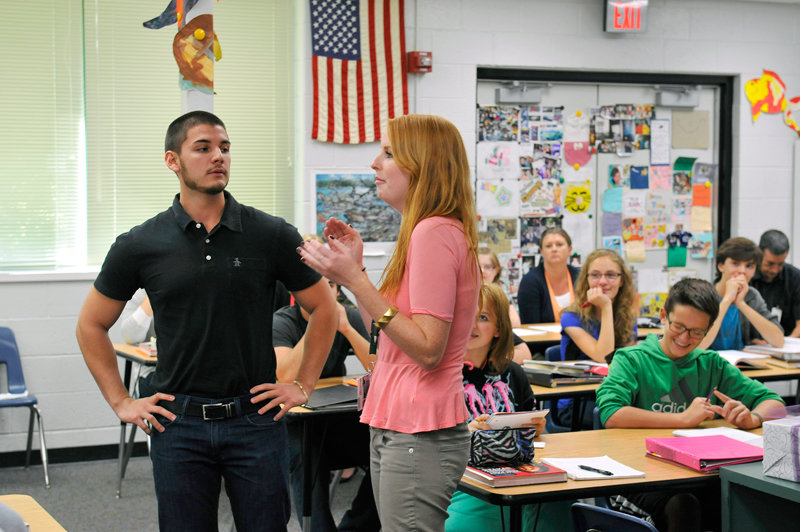How to get more teacher trainees in more classrooms sooner
In Haslett, college seniors and eighth-graders sit in the same social studies class. About 160 miles away in Avondale, there’s a college student for every eight elementary students. Both may offer a glimpse of the future of teacher preparation in Michigan, with colleges getting future teachers into the real world early and often.
Better preparation of the next generation of teachers is key to improving the quality of Michigan’s public education. Young teachers drop out of the profession at a higher rate than their students, and their students don’t learn as much as the students of veteran teachers.
Teachers, principals and administrators argue that college students in teacher prep programs need to get off campus and into classrooms.
“Teachers are not going to be as good on their first day as they are later,’ said Kyle Greenwald, MSU associate professor in charge of an innovative program embedding college students in middle school. “Education can only take you so far.”
Oakland University kicked off an elaborate experiment this fall, turning Auburn Elementary in Avondale Public School District into a “laboratory school,” with between 50 and 60 Oakland education students in the building daily. The students observe elementary classes and take college courses inside the school.
“It’s like a teaching hospital, with medical students working over the shoulders of practicing physicians,” explained C. Robert Maxfield, interim dean of the School of Education and Human Services at Oakland University. “It overcomes one of our biggest problems – that teacher education isn’t rooted in the real world.”
At Haslett Middle School, MSU students are embedded in an eighth-grade social studies class, both observing and acting as teacher assistants to veteran teacher Ben Pineda. When not in Pineda’s class, the MSU students are down the hall taking a teacher preparation methods class that would normally be taught on the East Lansing campus.
“This gives us the opportunity to talk about things that just happened” down the hall, said MSU student Jessica Ohorich.
“These are powerful interactions,” said Greenwald. “Everybody is thinking about how to practice more clinical experience in their senior year. We need this sense of embedding.”
Michigan Education Watch
Michigan Education Watch is made possible by generous financial support from:
Subscribe to Michigan Education Watch
See what new members are saying about why they donated to Bridge Michigan:
- “In order for this information to be accurate and unbiased it must be underwritten by its readers, not by special interests.” - Larry S.
- “Not many other media sources report on the topics Bridge does.” - Susan B.
- “Your journalism is outstanding and rare these days.” - Mark S.
If you want to ensure the future of nonpartisan, nonprofit Michigan journalism, please become a member today. You, too, will be asked why you donated and maybe we'll feature your quote next time!


 MSU education students Alex Benitez, left, and Caitlin Gallagher, center, and other MSU students portray characters in the American Revolutionary War as they sit in and and take part in Haslett Middle School teacher Ben Pineda's 8th grade social studies class.
MSU education students Alex Benitez, left, and Caitlin Gallagher, center, and other MSU students portray characters in the American Revolutionary War as they sit in and and take part in Haslett Middle School teacher Ben Pineda's 8th grade social studies class.
